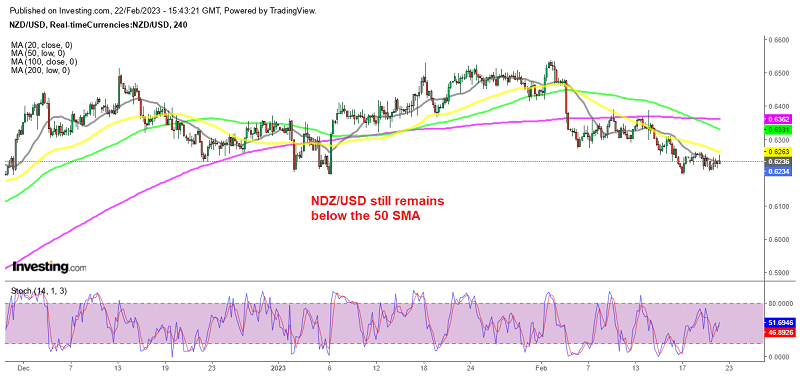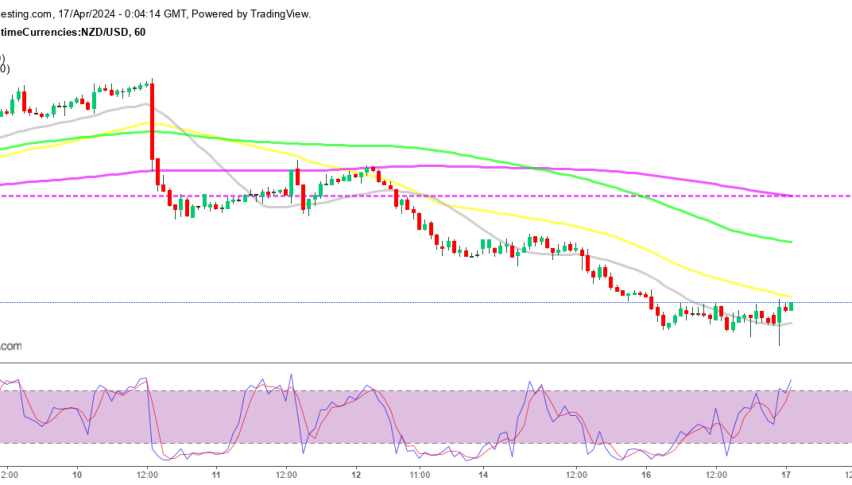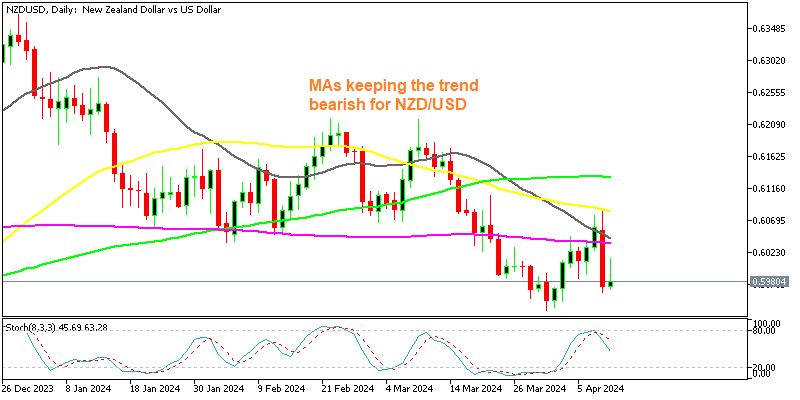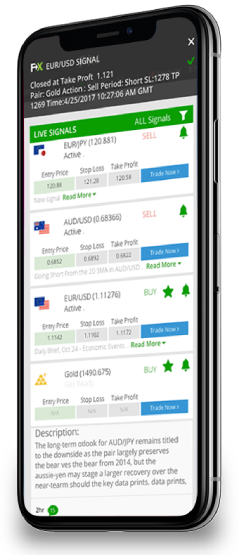
Where Does NZD/USD Stand After the RBNZ Hike?
NZD/USD has been showing signs of weakness and it come under some renewed selling pressure yesterday, ending up as the weakest among major currencies. Spot prices ended a few pips above 0.62, after this pair was rejected by moving averages higher, following the retrace during Friday last week and Monday.
So, the New Zealand dollar was looking vulnerable ahead of the Reserve Bank of New Zealand meeting. Although, markets had already scaled back expectations of an aggressive rate hike this time, as inflation seems to bearching a peak in New Zealand.
On the other hand, the US Dollar is experiencing renewed buying interest, as markets expect further policy tightening by the FED, which, in turn. This is also helping weighing down on this pair and traders seem convinced that the FED will remain hawkish for longer, with expectations of at least a 25 bps lift-off in the next two FED meetings in the coming two months.
The risk sentiment is waning due to global worries about economic headwinds stemming from rapidly rising borrowing costs, as well as from geopolitical tensions. So, the RBNZ statement which you can find below wasn’t particularly hawkish, which leaves NZD/USD with a bearish bias.
RBNZ Interest Rate Decision and Statement
RBNZ sees official cash rate at 5.14% in June 2023 (prior 5.41%)
- At 5.5% in March 2024 (prior 5.5%)
- RBNZ hikes cash rate by +50bp, from 4.25% to 4.75%
- Sees official cash rate at 5.5% in June 2024 (prior 5.5%)
- Sees official cash rate at 4.05% in march 2026
- Sees NZD TWI around 71.5 in March 2024 (prior 70.0)
- Sees annual cpi 4.2% by March 2024 (prior 3.8%)
Committee remains resolute in achieving the monetary policy
- Committee members agreed that monetary conditions needed to continue to tighten further
- While there are early signs of price pressure easing, core consumer price inflation remains too high
- Employment is still beyond its maximum sustainable level, and near-term inflation expectations remain elevated.
- Committee will look through short-term output variations and direct price effects of cyclone damage
- While there are early signs of demand easing it continues to outpace supply, as reflected in strong domestic inflation
From the RBNZ minutes:
- Increases of 50 and 75 basis points were considered
- Inflation is currently too high and employment is beyond its maximum sustainable level
- Committee agreed it must continue to increase the official cash rate (ocr) to return inflation to target and to fulfil its remit
- Balance of risks around inflation remain skewed to the upside
- The extent of this risk had moderated somewhat since November
- Committee members discussed the effects of Cyclone Gabrielle and other recent severe weather events
- Members noted the rapid pace and extent of tightening to date implies monetary policy is now contractionary
- Economic impacts discussed by the committee from weather events included the immediate upward pressure on some prices
- Committee agreed that the medium-term impacts of the severe weather events do not materially alter the outlook for monetary policy
- Committee agreed that housing market related activity was a downside risk
- As debt servicing costs rise, spending decisions for many households will become increasingly constrained
- As in the November statement, the central projections show a decline in GDP this year
- Resilience of household balance sheets is seen as a downside risk












